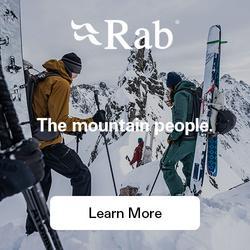
Drew Hardesty
Forecaster
A novel danger that we cannot easily see?
Misleading or often conflicting test results?
A public that struggles with message fatigue?
Conflicting and competing fears?
Determining the Risk
Determining the Path Forward
Communicating the Path Forward
Determining the Risk - The What?
Avalanches: In avalanche forecasting, we approach risk via the Conceptual Model of Avalanche Hazard (Statham, et al 2017).
It is a clear and repeatable process using data and evidence for gauging risk (potential loss to life and property or other things of value).
It is based upon the judgement of professionals and experts, however, and may be susceptible to human error and bias. Some level of uncertainty will always be present.
The Conceptual Model is broken down into
Likelihood - how likely (unlikely, possible, likely, very likely, almost certain) will an avalanche occur and in what locations (isolated, specific areas, or widespread)?
Destructive Size - mass, speed, and density are combined to relay destructive potential (relatively harmless, can bury and kill a person...continuing on to can gouge the landscape/largest snow avalanche known/could destroy a village).
These considerations may be amplified or attenuated by other factors as it relates to something being at-risk:
Exposure - How exposed am I to the danger? Is the danger over there and I am over here?
Vulnerability - How vulnerable am I to the danger; ie - what is the probability of death if I am caught in an avalanche? Do I have reliable and practiced rescue partners? Am I wearing PPE (personal protective equipment?). No vaccine or immunity.
Viral Disease (Covid-19):
Likelihood - How communicable is the disease and in what locations? tough - comm during asymptomatic unreliable feedback
Case fatality rate/Mortality - How deadly is this disease? higher risk. individual. host.
Exposure - How exposed am I to the danger? Inside, close proximity, shouting/coughing/sneezing.
Vulnerability - How vulnerable am I to the danger and what precautions can I take? Individual risk factors.
Airbag...hospital/ventiloators. May help doesn't prevent getting caught.
Determining the Path Forward - Now What?
Our estimation of the avalanche risk then informs our Strategic Mindset (Atkins, 2014). The Strategic Mindset is travel guidance for Exposure on How Shall We Move through This World based upon the risk at hand? (Assessment, Status Quo, Stepping Back, Entrenchment, Stepping Out, Open Season). In general, the Strategic Mindset implies an inverse relationship between risk and exposure.
Communicating the Path Forward - So What?
The avalanche professional, in using the Conceptual Model of Avalanche Hazard, settles upon a risk, or danger rating for a certain time period. The North American Danger Scale (below) is a 5 point scale that includes Words, Colors, Numbers, Definitions, and travel guidance. Critical in communicating the path forward is that the message is delivered by a single designated avalanche professional in clear, compassionate, and honest way that presents practical and actionable advice for everyone. This advice must be modeled by the avalanche professional. Marketing. How do people undersatnd the experience without having the experience.
LOW - (green, level 1) MODERATE - (yellow, level 2) CONSIDERABLE - orange, level 3 HIGH - (red, level 4) EXTREME - (black, level 5)



